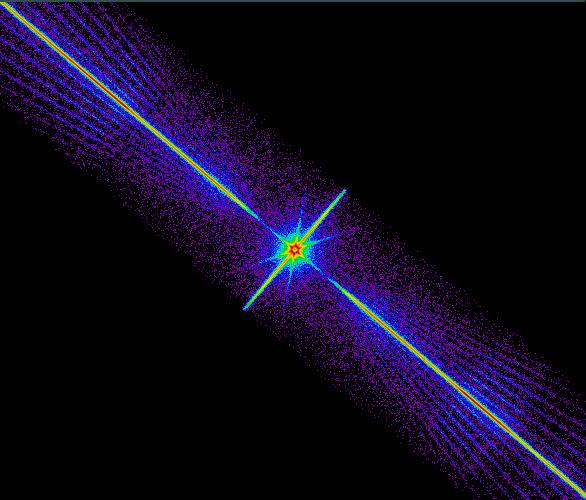
 Credit: NASA/CfA/J. McClintock, M. Garcia
Credit: NASA/CfA/J. McClintock, M. Garcia
X Marks the Hole
Astronomers have a limited number of tools available to explore the
Universe. One of the most powerful is spectrometry, in which light from an
astronomical source is broken down into its component wavelengths. Until
recently X-ray astronomers were at a disadvantage, since X-ray
observatories were only able to generate crude spectra of most sources in
the sky. However, the Chandra X-ray
observatory has changed all that. The Chandra observatory uses
diffraction gratings to spread out X-ray starlight so astronomers can
precisely determine the temperature and chemical composition and other
properties of the X-ray source. The image above shows an observation of
the suspected black hole system known as XTE
J1118+480 made by the Low
Energy Transmission Grating (LETG). The source is at the center of the field
at the intersection of the bright rays. The X-ray spectrum of the source
can be seen as the bright diagonal line on either side of the source. The
"spokes" and the fainter diagonal lines are artifacts due to the structure
that supports the LETG grating elements
Last Week *
HEA Dictionary * Archive
* Search HEAPOW
* Education
Each week the HEASARC
brings you new, exciting and beautiful images from X-ray and Gamma ray
astronomy. Check back each week and be sure to check out the HEAPOW archive!
Page Author: Dr. Michael F.
Corcoran
Last modified June 12, 2001


